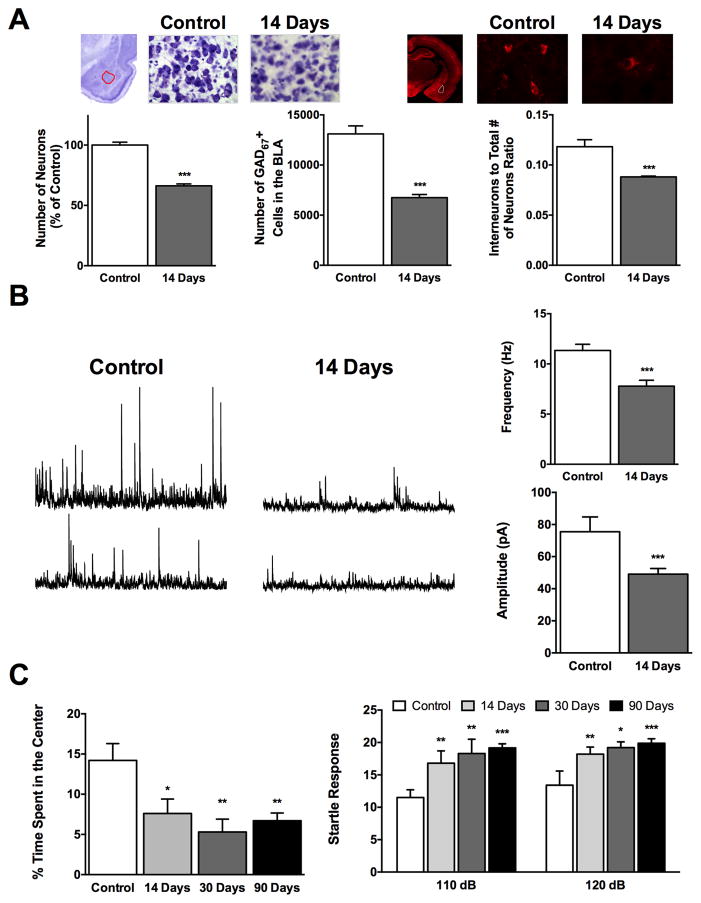Figure 1.
Status epilepticus (SE) induced by exposure to soman causes severe neuronal loss in the basolateral amygdala (BLA) that leads to long-term increases in the excitability of the BLA network and increased anxiety-like behavior. (A) Fourteen days after exposure of rats to soman (1.2 × LD50), there is a significant reduction in the total number of neurons—as determined by unbiased design-based stereological counting in Nissl-stained sections—and GABAergic interneurons in the BLA, with a decrease in the ratio of GABAergic to the total number of neurons in comparison to control rats. Photomicrographs in the top show Nissl-stained (left) and GAD-67 labeled (right) sections from the BLA of control rats and soman-exposed rats, 14 days after the exposure. Bar graphs show the group data on neuronal loss (data are from Ref. 24). (B) The frequency and amplitude of spontaneous IPSCs are significantly reduced 14 days after soman-induced SE; representative traces are shown on the left and group data on the right (from Ref. 41). (C) Anxiety-like behavior is increased after soman exposure, an impairment that persists at 90 days postexposure. The time spent in the center of the open field is shown on the left, and the amplitude of the startle responses to acoustic stimuli on the right (from Refs. 14 and 24).

